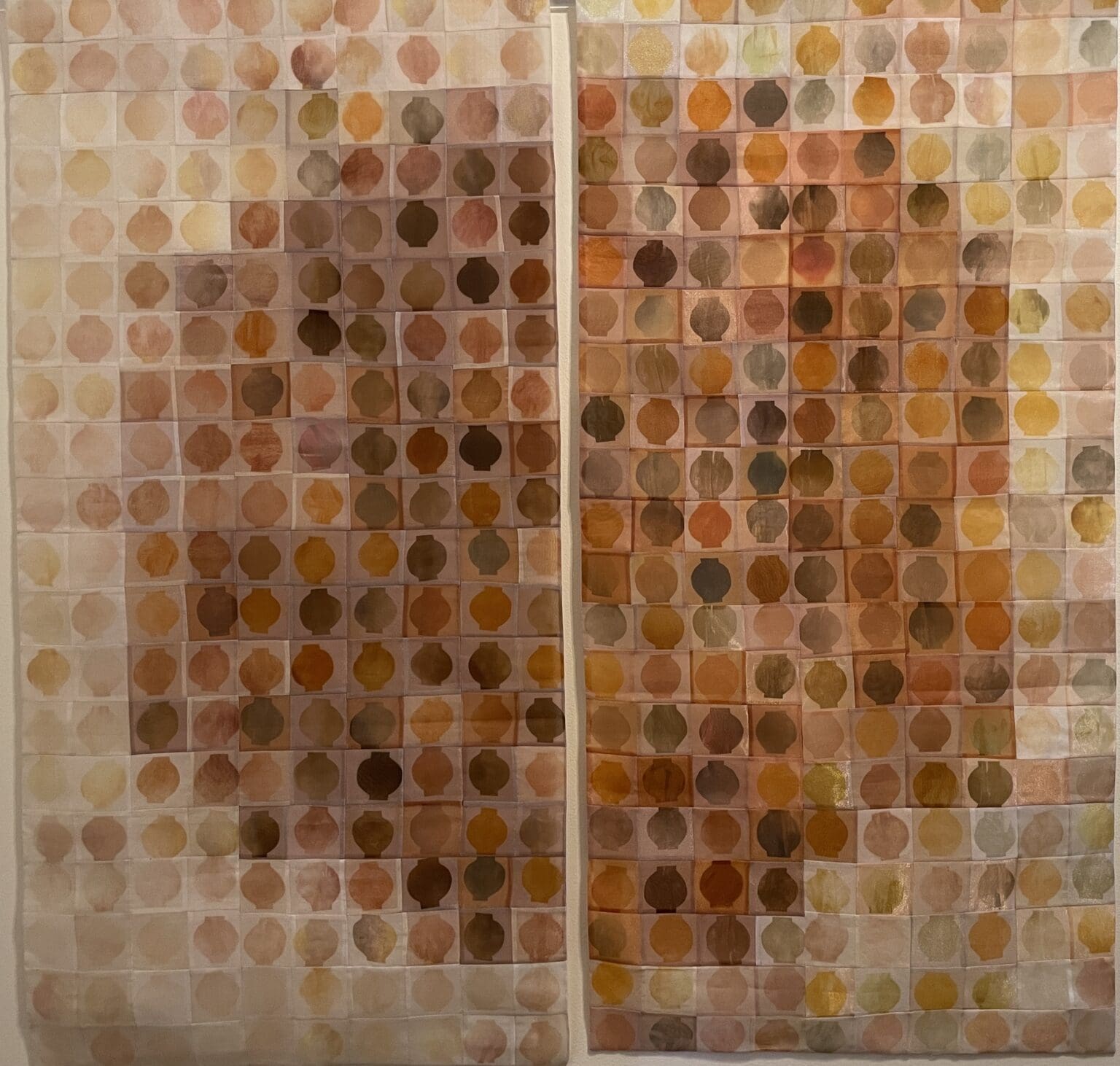“Bojagi Journey 2023” is a fascinating exhibit curated by Patti King that recently opened at the Pacific Northwest Quilt & Fiber Arts Museum in La Conner.
The “journey” began more than 30 years ago with artist Chunghie Lee, whose teaching, writing and lecturing helped popularize this unique folk tradition. For 600 years, bojagi were made by Korean women as a way to repurpose otherwise useless scraps of fabric into wrapping cloths and patchwork clothing.
The aspiration, expressed by Lee, is that bojagi be constructed out of fragile, multi-colored, transparent layers of silk, so weightless they ripple with the slightest breeze as you walk past them.
Lee’s own work in the exhibition, “Red No-Name Woman,” is a patchwork of photo-printed images in many shades of red. It evokes the labor of countless female artists who kept the tradition alive.
It’s dreamlike to wander through the rooms of the historic Gatches Mansion, which is draped with colorful fabric choices King has chosen to include. Elin Noble’s “As the Sun Moves” and Danish artist Charlotte Yde’s delicate sail-patterned bojagi epitomize the delicacy of the medium, as does Miran Lee’s huge silk organza fish, “A Fish Out of Water.” In her case, it echoes both the constant devotion of Buddhist faith and her own experience as an immigrant.
“Moon Jar,” by Minik Kim, is a delicate tapestry picturing a shadowy moon made up of 200 small images of jars.
Sara Cook’s symbolic “Grey Line #2” is “intended to evoke the feeling of light moving across the landscape … the boundary between night and day … when shortwave radio signals travel around the world the quickest,” Cook writes in the description.
Yolanda Sanchez conforms to the lightness and the patchwork nature of bojagi in her silk organza, machine-stitched “Pleasure is a Measure of Freedom.” And Heather Brincko’s “Tea Bag Panel” gets credit for a work closest to the ancient tradition of repurposing otherwise wasted material.
Many of the artworks of the curator’s choice are not light or fragile. Zia Gipson’s tortuous “Conundrum” is made of heavy, felted paper. Ach-Kyeong Kim’s “Embroidered Cloth” is sturdy enough to carry packages. And Laurel Stengal Schmidt’s “Soliloquy” in cotton, craft paper, and bamboo is an admirable work, but it does not tremble in the breeze. David French’s “Composite” is mixed-media on a wooden box.
I did wonder what was in King’s mind when she chose Inge Roberts’ two porcelain plaques, “Don’t Look” and “Speak,” to represent delicate fabrics rustling in the wind.

Another new exhibit, David Owen Hastings’ “Modern Abstraction: A Journey in Paper + Stitch,” is also on display. Hastings is well known in the Northwest as a designer, print and textile artist, and recently became president of the Seattle Modern Quilt Guild. His show is a blockbuster exhibit of his own textile artwork, stitched paper compositions and fabric quilts.
In his words: “There’s something magical in taking a length of yarn or a piece of fabric, and turning it into something useful and beautiful with your own hands.”
Hastings is a dedicated teacher, punctuating his exhibit with first-rate suggestions which an artist in any medium could take to heart. His two-color quilts are themselves an exercise in how much variety and visual interest can be created using a limited palette. He loves to use this exercise as a starting point for new designs and suggests using light, medium and dark values, allowing one value to predominate.
Among Hastings’ work on view is “Kibun,” (“mood”) constructed of shibori-dyed paper, indigo, vintage tulle, and silk, machine-stitched. It resulted from his discovery of a vintage kimono and being “transfixed” by its materials. So he took the garment apart and combined it with shibori-dyed paper. Exhibited before a light source, the work is transfiguring.
Matching “Kibun” in impact is Hastings’ work, “Jiyu,” (“freedom”), created in 2020 in response to the pandemic and an escalation of violence against Black Americans. One senses a dynamic pressure and urgency in the large work.
With his powerful pieces “Pachipachi” (“crackle”), “Gorogoro” (“rumble”) and especially “Naniwa Okita,” constructed of vintage fabrics from Japan, Hastings stakes a claim as a leading modern artist.
“Bojagi Journey 2023” remains on view through Oct. 8 and “Modern Abstraction” can be seen through Oct. 29 in La Conner at the Pacific Northwest Quilt & Fiber Museum, 703 S. Second St. Hours are 11 a.m. to 5 p.m. Wednesday–Sunday. Entry is $5–$7 (free for museum members and children 12 and younger). Info: qfamuseum.org.





